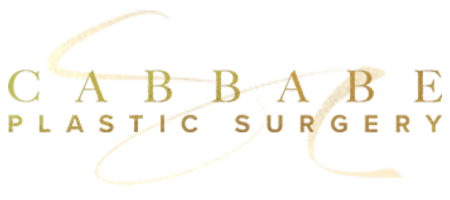From Burden to Beauty: Panniculectomy, the pathway to a lighter, freer you – St. Louis, MO
After significant weight loss, men or women may be left with extra, loose skin and fat in the lower abdomen below their belly button. This is referred to as an apron or “pannus”. In severe cases, this tissue can reach the ground and limit mobility. A panniculectomy is a procedure to remove this excess tissue.
Generally, a panniculectomy is a reconstructive procedure and may be covered by certain insurance providers. An abdominoplasty, on the other hand, includes a panniculectomy but also entails removal of tissue above the belly button, repositioning the belly button and tightening of the abdominal muscles to contour the torso. Most patients in Dr. Cabbabe’s experience, need full tummy tuck surgery or abdominoplasty rather than just panniculectomy alone since only the tissues below the belly button, as opposed to the entire abdomen, are the ones treated with this procedure.
Dr. Cabbabe incorporates his experience with reconstructive and cosmetic surgery of the body to give his patients the best results possible to meet their desires. He is an expert in cosmetic, reconstructive, and minimally invasive body surgery. During your consultation, Dr. Cabbabe will carefully examine you and will make recommendations in order to help you achieve your desired result.
Prior to Surgery
Dr. Cabbabe requests that all patients take iron (ferrous sulfate) supplementation, approximately 300 mg three times a day, for 3 weeks prior to surgery. This helps patients increase their red blood cell counts prior to surgery and makes recovery much smoother for patients.
Do NOT take any aspirin, Plavix, or ibuprofen at least 10 days prior to surgery. Coumadin or any other type of blood thinner prior to surgery. Dr. Cabbabe may also recommend that you stop any hormones or oral contraceptives to reduce the risk of blood clots in the legs around the time of surgery.
It is helpful to have a recliner to sleep on for the first week or two when you transition to a bed. Extra compression garments, including FAJA’s in different sizes, are helpful as your size will decrease after the swelling goes down. Female urination devices can be purchased on Amazon to be used while garments are worn.
Eat a healthy diet and avoid alcohol at least 48 hours prior to surgery to maintain hydration around the time of your procedure. Nicotine usage leads to a well-known higher rate of complications including infection and should be stopped at a minimum of 3 weeks prior. Take this as an opportunity to quit smoking forever to enjoy the health benefits long-term as well as improved skin texture with less wrinkling.
Surgery
Prior to surgery in St. Louis, Dr. Cabbabe will place markings on the abdomen and any planned areas of liposuction. Nerve blocks may be done by the anesthesiologist to minimize pain after surgery. Numbing solution is used to minimize blood loss and assist with pain control.
Skin and fat are removed from the lower abdomen while keeping the scar as low as possible. As much tissue as possible is removed. The belly button is stretched into a lower position or sometimes detached and lowered. No abdominal muscle tightening is done in this procedure.
Sutures are used internally to minimize the need for drains. In select patients, no drains are needed. In other patients, 2 drains are placed inside the abdomen and removed within 1-2 weeks.
Recovery
If this procedure is done by itself, most patients are able to go home the same day. Pain medication and antibiotics will be prescribed. There may be some numbness in the abdomen which slowly improves with time. Most patients are able to shower within 24 hours. If drains are placed, they are generally removed within 1-2 weeks of surgery. Recovery time is 2 to 3 weeks. Dr. Cabbabe will ask you to wear compression garments for 2 weeks after surgery to help minimize swelling and maximize your result.
Complications
Heavier patients (BMI >30) experience more complications. If your BMI is greater than 35, Dr. Cabbabe may not recommend surgery. Complications include bleeding after surgery, and fluid collections which may result in infection, thickened scars, skin necrosis, asymmetries, and blood clots. These may require additional procedures to correct.
Dr. Cabbabe in St. Louistakes measures to prevent complications including appropriate use of antibiotics and drains to prevent infections, leg sequential devices to prevent blood clots in the legs, and careful tissue handling to prevent skin necrosis. Board-certified anesthesiologists are used for all of his surgeries.
Cost
The cost of a Panniculectomy Surgery will depend on several factors. The price can be affected by body type, type of technique performed, surgical complications, and even allergies. Find out more by scheduling a consultation.
Contact Our Office
At Cabbabe Plastic Surgery, you’ll have the experience of Dr. Samer Cabbabe who is regarded as one of the best plastic surgeons in St. Louis & US who will help develop a fully customized surgical plan and guide you through your entire surgical process. If you’re interested in learning more about Panniculectomy, don’t hesitate to contact our office to schedule your informative consultation today.
